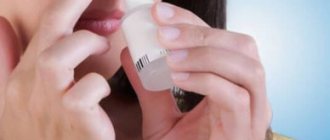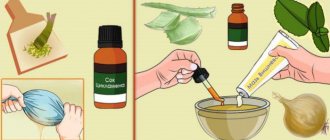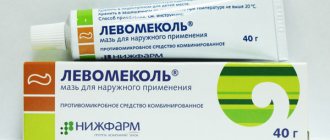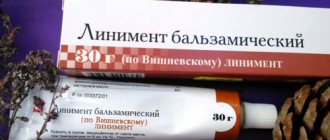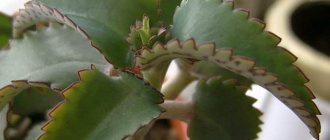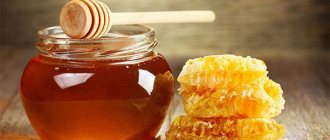The use of ointments in the treatment and prevention of sinusitis
It is preferable to use ointment forms for sinusitis because they:
- can be used for a longer time than sprays and drops;
- have a gentle effect and do not dry out the mucous membranes;
- do not enter the larynx;
- the concentration of medicinal substances remains unchanged during storage;
- have better tolerability, less pronounced systemic effects;
- easy to apply;
- easy to use at home.
Indications and for what forms of disease they are used
Depending on the nature of sinusitis, ointment preparations for its treatment and prevention can be:
- Antibacterial - used for bacterial sinusitis at the initial stage of disease development, including with abundant purulent discharge.
- With antihistamines - treat acute, chronic allergic forms.
- Anti-inflammatory.
- Antiviral ointments are suitable for the prevention of sinusitis during the cold season.
- Complex, combined, complex action - for various forms and stages of the disease.
- Warming up.
- Homeopathic - have a minimum of contraindications and side effects.
Operating principle
Thanks to its texture, ointments:
- do not leak from the nose, for a long time they create a protective, mechanical barrier that does not allow pathogenic microflora to break through to the cell membrane of a healthy cell;
- have a high degree of absorption;
- create a continuous film on the mucous membrane.
This nature of the effect allows you to productively stop the inflammatory process during sinusitis, relieve swelling, help remove mucous contents from the nose, and significantly alleviate painful symptoms.
Directions for use: how to put the ointment into your nose correctly
Before the procedure, you need to clean, or better yet, rinse your nose from accumulated mucus. Further algorithm for administering the drug:
- Apply a small strip of ointment to a cotton swab/prepared turunda;
- the head is thrown back, leaning towards the shoulder, the tip of the nose is raised with the thumb of the free hand;
- With a rotational movement, the turunda with ointment is introduced into one of the nasal passages, its lower part. Immersion depth – 1-1.5 cm, delay time – according to the drug recipe;
- The same is done with the other nostril;
- used turundas are immediately thrown away.
Before starting a treatment session, there is no need to instill vasoconstrictor drugs into the nose; this may reduce the effectiveness of the procedure.
Are there any contraindications
Ointments may be contraindicated for sinusitis if:
- the disease is in the acute phase of its course;
- there are allergies to the ingredients that make up the medicine;
- there are skin, inflammatory diseases in the acute stage, dermatitis;
- there are oncological diseases.
The best ointments for sinusitis - Healthy Life
In complex treatment, doctors for Hemoritis can use external means, such as
- Flame ointment,
- Ichthyol;
- Lefty;
- 7 Vishnevskaya ointment;
- Simanovskaya ointment;
- Doctor. Mom for children
Using available ingredients, you can prepare an effective external remedy for sinusitis at home. However, use must first be agreed with your doctor.
The use of ointments in the treatment and prevention of sinusitis
Any type of sinusitis ointment is easily applied to a cleansed nasal cavity. It allows action specifically in the area affected by the infection.
Features of the choice of medicines
The choice of ointment for the complex treatment of sinusitis should be entrusted to an ENT specialist. He will accurately make a diagnosis, determine the severity of the disease, and take into account the data of the patient’s previously collected concomitant anamnesis. If this is not possible, you should carefully study the instructions for the drug and carefully review the list of side effects and contraindications.
How to treat sinusitis with Vishnevsky ointment
Vishnevsky's balsamic liniment is a long-used remedy for the treatment of sinusitis in the early stages of its onset. Birch tar, xeroform, castor oil in the composition of the drug - stop the progression of the disease, help cleanse the nasal passages and sinuses, relieve swelling of the mucous membrane, and restore it. The most common method of use is the intranasal introduction of twisted flagella (turundum) soaked in liniment into the nasal cavity. In addition to pure Vishnevsky liniment, to enhance the therapeutic effect, components such as honey, cyclamen root juice, Kalanchoe leaves, aloe, and onion are often added to it (in equal proportions). The cost of the drug is 28 -70 rubles.
Turundas in the nose
Cotton or gauze turundas are completely saturated with liniment and inserted one at a time into the nasal passages. A new turunda is used for each nostril. During the procedure, you need to lie on the side where the medicine will be placed. Frequency of administration – 1 r./day, at night, retention time in the nose – 30 minutes.
The duration of such therapy is not < 20 days, but not more than 30 days. The presence of purulent processes in the nose is a contraindication to the use of ointment.
Treatment of Ichthyol - method of application
Based on ichthammol, it accelerates the process of treating sinusitis, destroys pathogenic microflora, promotes the removal of accumulated purulent secretions, and has a regenerating effect. An effective method of application is to place cotton/gauze pads soaked in Ichthyolka into the pre-cleansed nasal passages and keep them there for min 5 minutes, max 15 minutes. You can apply the ointment to cotton pads, and then apply them externally, on the wings of the nose, on the projection of the maxillary sinuses, holding them for 30-60 minutes. Price – 37-174 rubles.
Instructions for use
Simonovsky ointment for the nose is used as an auxiliary and primary anti-inflammatory agent for therapy. It is used quite rarely, so patients may have questions during the treatment process.
To speed up recovery, you should follow medical recommendations:
- Do not apply more product to the nasal mucosa than recommended by the otolaryngologist. This may trigger the development of a local allergic reaction;
- the duration of the treatment course must not be exceeded. Vasoconstrictor ointments, drops, sprays are addictive. In the future, a person is forced to use them constantly, which leads to atrophy of the mucosa.
Before application, it is necessary to rinse the nasal passages with antiseptic solutions Miramistin, Chlorhexidine or Furacilin. You can also use infusions of medicinal herbs to remove mucus and infectious pathogens. The greatest medicinal effectiveness is characteristic of calendula, chamomile, and sage. To prepare the infusion, brew a teaspoon of plant material with a glass of boiling water.
Indications and contraindications
The drug is prescribed to patients to improve their well-being. Breathing becomes easier, sensations of irritation, dryness, and pain disappear. The drug is used exclusively to reduce the severity of symptoms of maxillary sinus congestion. It is not able to eliminate the causes of the development of pathologies of the upper respiratory tract. It is combined with other local and systemic agents - antibiotics, antimycotics, interferons.
Simonovsky ointment is used not only in the treatment of sinusitis, but also in the following diseases:
- sinusitis;
- drug-induced rhinitis;
- infectious or allergic runny nose.
Simanovsky ointment for children under 12 years of age can be prescribed in exceptional cases. The drug is prohibited for use during pregnancy and lactation.
Directions for use and doses
There is no single instruction for the use of Simanovsky ointment. The dosage regimen for colds, runny nose (rhinitis) is determined by the attending physician. In acute or protracted form of sinusitis, 3-4 times of use is prescribed. If the contents are well separated from the nose, then it is enough to lubricate the mucous membranes before going to bed.
The product can be used in two ways:
- just smear the mucous membranes of the nasal cavity with the drug;
- Apply it to cotton pads and place them inside the nose for 15-20 minutes.
The duration of the therapeutic course should not exceed 5-7 days. During treatment with Simanovsky ointment, it is not recommended to use vasoconstrictor drops.
Side effects and special instructions
Contains highly allergenic substances. When they are combined, the risk of developing a local sensitization reaction increases. The doctor personally writes a prescription after examining the patient and studying the results of laboratory tests.
If necessary, he adds ingredients and adjusts their quantitative content. If a patient has hypersensitivity to one of the components, then it is excluded from the composition of the drug.
If after 3-4 days of treatment with Simanovsky ointment the condition worsens, you should contact an otolaryngologist.
Warning factors include fever, lack of appetite, and headaches. Such symptoms indicate accumulation of mucus mixed with pus in the sinuses. The patient needs antibiotic therapy and a long course of immunostimulants.
Homemade folk ointments for preparing at home
Diseases of the maxillary sinuses are a serious disease and need to be treated with medications and physiotherapy prescribed by an ENT doctor. This does not prevent you from using self-made remedies (according to folk recipes) for faster healing without punctures.
Ointments prepared by yourself are also a medicine, so they cannot be used in excess of the recommended dosage, longer than necessary.
With laundry soap and onions - recipe
To prepare, mix in equal proportions:
- any vegetable oil;
- grated or liquid dark laundry soap;
- juice from grated onion.
The resulting mixture is heated in a water bath with constant stirring. You can add egg, honey, milk, etc. to the composition. oil.
The finished product is stored in the refrigerator and slightly warmed before use. It is administered for 10-15 minutes, 2-3 times per day. Treatment with this remedy should not last longer than 2 weeks, because household. soap dries out the mucous membranes greatly. For the best effect, you can first drip (4-5 drops) freshly squeezed beet juice into the nasal passages. The resulting composition will help with chronic, advanced, acute sinusitis.
With wax and egg
You will need:
- natural beeswax – 100 g;
- any vegetable oil (not refined) – 120-150 ml;
- boiled chicken egg yolk (or 3 quail eggs).
The mixing container should be enameled or stainless steel.
Recipe:
- the wax crumbles or is grated;
- The container with oil is placed in a water bath, heated to +35-40 degrees over low heat;
- wax is gradually added there, with constant stirring;
You need to make sure that the mixture does not boil.
- when the wax reaches a liquid, homogeneous consistency and completely dissolves, gradually add a finely grated egg;
- the resulting mixture is cooled, filtered, and used.
The product can be used for application to tampons, followed by immersion into the nasal passages, for a gentle massage of the skin on the nasal surfaces. The procedure can be repeated up to 4-6 times per day. The prepared composition helps well with purulent, allergic sinusitis.
With Protargol and menthol
The active component of such a product, protargol, is colloidal silver. This substance has an antiseptic, disinfectant, anti-inflammatory, astringent effect. Menthol - acts as a local analgesic and distraction agent.
For production you need:
- protargol – 10 g;
- menthol – 1.1 g
- Vaseline oil – 10 g;
- glycerin – 10.4 g;
- lanolin – 10.4 g.
Manufacturing method:
- the menthol solution is dissolved in half a portion of petroleum jelly at a temperature not > 50°C;
- dissolve protargol in glycerin in a separate container;
- lanolin is added to the resulting composition;
- The contents from 2 containers are mixed, the remaining Vaseline oil is added.
The resulting remedy can be used in the treatment of protracted fungal and bacterial forms of sinusitis. It is suitable for insertion into cleansed nasal passages; with its help, applications are made to the skin of the wings of the nose and the projection sites of the maxillary sinuses. Duration of treatment – not > 10 days.
Sinusitis: causes of development
One of the types of sinusitis is sinusitis - inflammation of the maxillary (maxillary) sinus. The initial stage of the disease occurs in an acute form. In the absence of proper treatment, the pathology becomes chronic and worsens with frequent infectious diseases. Sinusitis can develop against the background of the following factors:
- weakening of the body's protective functions;
- the presence of inflammatory and infectious processes;
- chronic diseases of the ENT organs;
- congenital anomalies of the structure of the nasal cavity;
- negative influence of the external environment.
Viruses and bacteria that enter the paranasal sinus area quickly provoke the development of a serious illness. Usually the inflammatory process begins with a common cold, the treatment of which is rarely given due attention. Most people hope that the symptoms will go away on their own or use ineffective treatments while the infection spreads further.
Doctor mom
Doctor Mom ointment is known for its positive effect on various colds. This ointment can also be used as part of complex therapy for sinusitis. Doctor Mom contains:
- camphor;
- thymol;
- menthol;
- turpentine, eucalyptus and nutmeg oils.
The ointment is applied to the bridge of the nose and wings of the nose. It has an irritating, anti-inflammatory and analgesic effect, improves nasal breathing, and eliminates headaches. Using Doctor Mom, you can significantly reduce the number of uses of vasoconstrictor drops and experience noticeable relief from sinusitis.
How is ointment made?
The instructions for use recommend using Simanovsky's complex ointment for the treatment of sinusitis and acute rhinitis. It is prepared only in pharmacies that have a license to produce medicines. The doctor indicates the composition of the drug in the prescription. The concentration of components may differ from the base version and depends on the individual characteristics of the inflammatory process.
The combined product consists of two phases - suspended (zinc oxide) and emulsified (aqueous solution). According to the technology, menthol is first combined with molten Vaseline. The temperature during this process should not exceed 50 °C. Zinc oxide is ground in a mortar with a few drops of petroleum jelly and then combined with a menthol solution.
Separately mix adrenaline hydrate and novocaine, and then add lanolin. After all the manipulations, the two parts of the medicine are combined and packaged in small jars intended for storing such medicines.
